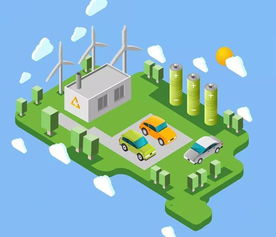临海汽车新站在哪
Title: Understanding the Principles of Electric Vehicles in Urban Environments
Electric vehicles (EVs) are becoming increasingly prevalent, especially in urban areas, owing to their ecofriendliness and efficiency. Let's delve into the principles underlying these vehicles, with a focus on their operation in urban environments.
1. Electric Vehicle Basics:
Electric vehicles are propelled by one or more electric motors, powered by rechargeable battery packs. These batteries store electricity, which is then used to drive the vehicle's motor(s). Unlike traditional internal combustion engine vehicles, EVs produce zero tailpipe emissions, making them environmentally friendly.
2. Powertrain:
The powertrain of an electric vehicle comprises several key components:
Battery Pack:
This is the heart of an electric vehicle. It stores electrical energy and provides power to the electric motor(s). Lithiumion batteries are the most common type used due to their high energy density and relatively low weight.
Electric Motor(s):
Electric vehicles can have one or more electric motors. These motors convert electrical energy from the battery into mechanical energy to propel the vehicle. They are highly efficient and require minimal maintenance compared to internal combustion engines.
Power Electronics:
This component manages the flow of electrical energy between the battery and the motor. It includes the motor controller, which regulates the speed and torque of the motor based on driver input.3. Regenerative Braking:
One unique feature of electric vehicles is regenerative braking. When the driver brakes or decelerates, the electric motor acts as a generator, converting kinetic energy back into electrical energy. This energy is then fed back into the battery, increasing efficiency and extending driving range.
4. Charging Infrastructure:
In urban environments, the availability of charging infrastructure is crucial for the widespread adoption of electric vehicles. Charging stations can be installed in various locations such as public parking lots, shopping centers, and residential complexes. Rapid advancements in charging technology, including fast chargers and wireless charging, are making EVs even more convenient for urban dwellers.
5. Environmental Benefits:
The transition to electric vehicles offers numerous environmental benefits, especially in urban areas where air pollution is a significant concern. By reducing reliance on fossil fuels, EVs help lower greenhouse gas emissions and improve air quality, making cities healthier and more sustainable places to live.
6. Urban Mobility Solutions:
Electric vehicles play a vital role in shaping the future of urban mobility. With the rise of ridesharing services and autonomous vehicles, EVs offer a clean and efficient mode of transportation for urban residents. Integrating electric buses and taxis into public transit fleets further reduces emissions and enhances overall mobility.
7. Policy and Incentives:

Government policies and incentives play a crucial role in promoting the adoption of electric vehicles. Subsidies, tax incentives, and rebates encourage consumers to switch to EVs, while regulations such as emissions standards drive automakers to invest in electric vehicle technology.
Conclusion:
Electric vehicles represent a transformative shift in urban transportation, offering a sustainable alternative to traditional gasolinepowered cars. By understanding the principles behind electric vehicle technology and supporting infrastructure, cities can accelerate the transition towards a cleaner, greener future.
This HTML content provides a comprehensive overview of the principles of electric vehicles in urban environments, highlighting their key components, environmental benefits, and the role they play in shaping urban mobility solutions.
标签: 临海新能源火灾最新消息 临海新能源起火 临港新能源厂
相关文章
-
露天煤业,能源开采的新篇章详细阅读

亲爱的读者,今天我们将一起探索一个既古老又现代的话题——露天煤业,煤炭,作为人类历史上最重要的能源之一,它的开采方式一直在不断进步,而露天煤业,正是这...
2025-10-02 256
-
上投内需基金,洞察中国消费升级趋势的投资利器详细阅读

在全球化的大背景下,中国作为世界第二大经济体,其内需市场的巨大潜力正逐渐成为全球投资者关注的焦点,随着中国经济结构的转型升级,消费已成为拉动经济增长的...
2025-10-01 200
-
东方财富证券网,数字化浪潮下的金融信息平台详细阅读

在数字化时代,信息的流通速度和获取方式已经发生了翻天覆地的变化,东方财富证券网作为中国领先的金融信息服务平台,正是这一变革的见证者和参与者,本文将深入...
2025-09-30 199
-
信达证券,中国资本市场的领航者详细阅读

在当今快速发展的金融市场中,信达证券作为中国资本市场的重要参与者,扮演着举足轻重的角色,本文将深入探讨信达证券的业务范围、市场地位、以及其在推动中国资...
2025-09-28 186
-
金龙汽车,中国商用车领域的领军者详细阅读

金龙汽车,作为中国商用车领域的领军企业,以其卓越的品质和创新技术在国内外市场上赢得了广泛的赞誉,本文将深入探讨金龙汽车的发展历程、产品线、技术创新以及...
2025-09-27 201
-
国投瑞银稳定增利,稳健投资的新选择详细阅读

在当前经济形势下,投资者对于稳健投资的需求日益增长,国投瑞银稳定增利作为一种低风险、稳健收益的投资产品,逐渐成为投资者关注的焦点,本文将深入探讨国投瑞...
2025-09-27 192
-
英镑实时汇率,掌握货币市场的脉搏详细阅读

在全球化的经济体系中,货币汇率的波动对个人投资者、企业以及国家经济都有着深远的影响,英镑作为世界上主要的储备货币之一,其汇率的实时变化对于从事国际贸易...
2025-09-27 180
-
美元指数的波动,影响因素、市场动态与新浪财经的角色详细阅读

在全球化的经济体系中,货币汇率的波动对国际贸易、投资和金融市场都有着深远的影响,美元指数(DXY)作为衡量美元相对于一篮子外币价值的指标,其变化不仅牵...
2025-09-27 127
